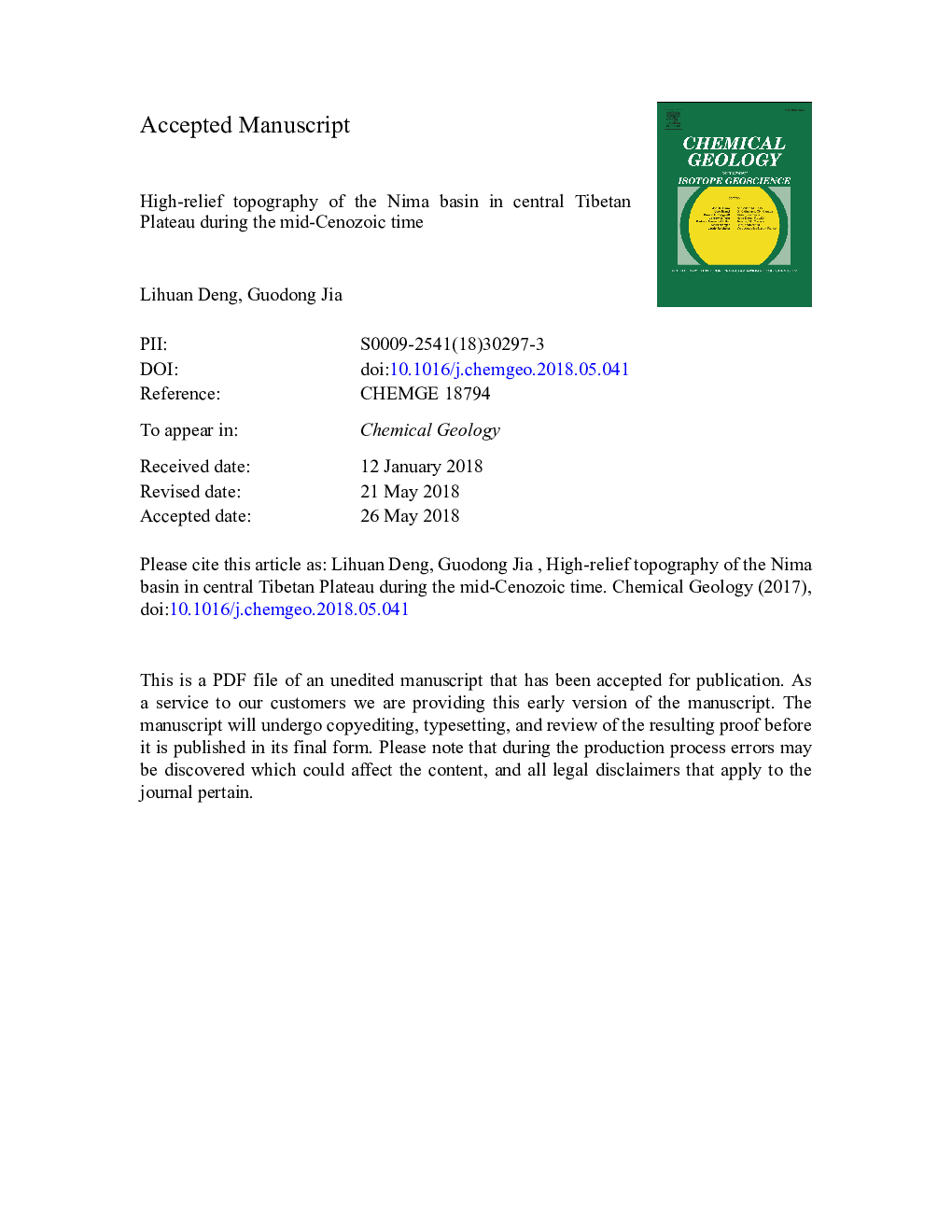| Article ID | Journal | Published Year | Pages | File Type |
|---|---|---|---|---|
| 8910142 | Chemical Geology | 2018 | 56 Pages |
Abstract
There remains inconsistence of uplift history of the Tibetan Plateau. Here, we estimated paleoelevation of mid-Cenozoic Nima basin located in central Tibet using multi proxies. They included meteoric water and vegetation isotope proxies based on hydrogen and carbon isotopic compositions (δD and δ13C), respectively, of terrestrial plant wax lipid of nâalkanes and temperature proxy derived from microbial membrane lipid of branched glycerol dialkyl glycerol tetraethers (brGDGTs). Lipid analysis on sedimentary rocks in the Nima basin yielded â222â¯Â±â¯12â° and â30.0â¯Â±â¯0.7â° for δD and δ13C of n-C29 alkane, respectively, and brGDGT-derived mean annual air temperature (MAAT) of 21.5â¯Â±â¯3.1â¯Â°C for the paleo basin. Using the sea-level meteoric water δ18O and Miocene Siwalik paleovegetation δ13C as low elevation references, values of δD and δ13C of n-C29 alkane in this study suggested paleoelevations of 4546â¯m and 2800â¯m, respectively. Whereas by using a subtropical sea surface temperature as a reference, brGDGT-derived MAATs suggested a paleoelevation of 893â¯m. We believed that the three estimates reflect a high-relief topography in the study basin during the mid-Cenozoic, representing elevations of orographic barrier of southerly oceanic moisture, basin catchment and basin lake level, respectively. This scenario implies a low elevation of the basin relative to the Lhasa Terrane located to the south during the mid-Cenozoic, hence challenging the classical crustal thickening models assuming a simple crustal thickening-uplift relationship.
Keywords
Related Topics
Physical Sciences and Engineering
Earth and Planetary Sciences
Geochemistry and Petrology
Authors
Lihuan Deng, Guodong Jia,
